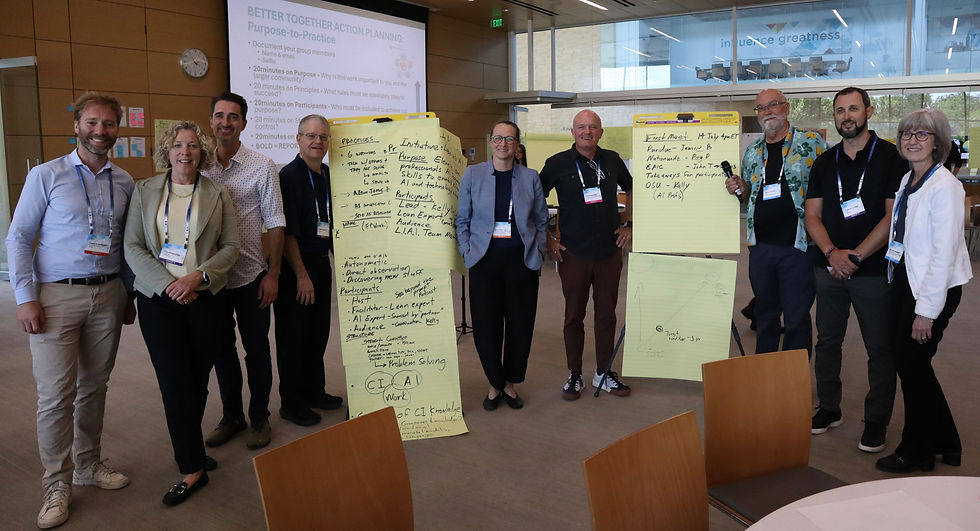The Purpose-Context Matrix: Bringing Structure to Workplace Innovation
- Eric Olsen
- Jun 4
- 3 min read
This blog has been updated and reposted in preparation for potential additional discussions on knowledge architecture and how to manage and apply the insights generated by discussions in the FPW community.
Over coffee in San Luis Obispo, Anan Sheth and I explored how a framework from innovation science might help organize the growing knowledge base emerging from the Future of People at Work (FPW) community. What started as a hallway conversation at Cal Poly evolved into a deeper discussion about bridging the gap between academic frameworks and practical workplace improvement.

Why This Matters
The FPW community faces a challenge familiar to many improvement practitioners: we have rich insights from lean, agile, design thinking, and other methodologies, but lack a systematic way to understand when and where each approach works best. Organizations invest significant resources in improvement initiatives, yet struggle to select the right method for their specific situation. The Purpose-Context matrix offers a potential solution by mapping what we're trying to accomplish (purpose) against the circumstances we're working in (context).
The Framework in Action
At its core, the Purpose-Context matrix asks two fundamental questions:
What are we trying to accomplish? (Purpose: DO-THIS)
Under what circumstances? (Context: HERE)
Consider a practical example: managing inventory. A lean practitioner might use Kanban boards in manufacturing, while an agile team uses digital boards for software development. Same purpose, different contexts, potentially different tools. The framework helps us see these patterns systematically. See Anan’s paper on Process-Context Matrices here.
Building Bridges Across Methods
What excites me most is the framework's potential to identify gaps where different improvement communities could collaborate. As Anan explained, "Purpose-Context helps us see where lean and agile practitioners might be solving similar problems in different ways - or missing opportunities entirely."
The framework can incorporate multiple dimensions:
Understanding level: How well do we know this approach?
Accessibility: Can practitioners actually use it?
Application frequency: Is it theoretical or actively used?
Moving from Theory to Practice
During our discussion, we identified several ways FPW could implement this framework:
Pilot Projects: Test the framework with specific improvement tools or methods
Community Workshops: Engage experts to map purposes and contexts in their domains
AI-Assisted Analysis: Use technology to process existing knowledge bases
Student Research: Leverage academic partnerships for systematic development
The Path Forward
The FPW community is uniquely positioned to develop this framework further. Our April Central Coast Lean Summit could serve as an initial testing ground, leading to broader implementation at the June symposium in Salt Lake City.
We're not prescribing solutions but providing structure for the rich conversations already happening. As we often say in FPW: it's about conversations leading to a body of knowledge, which drives action.
Join the Conversation
Help us explore how Purpose-Context matrices could organize improvement knowledge:
What purposes drive your improvement efforts?
What contexts shape your approach?
Where do you see gaps in current methodologies?
Join us at the Future of People at Work (FPW) Symposium, June 26-27, 2025, at OC Tanner's facility in Salt Lake City, where we'll explore these and other innovative approaches to improvement methods. Learn more at https://www.fpwork.org/
Connect with us:
Follow the FPW LinkedIn page: https://www.linkedin.com/company/future-people-work/
Register for monthly FPW conversations: https://forms.gle/yXPbCXURdfvYtjmn9
Check out this FPW related event from our partner organizations: https://www.fpwork.org/fpw-events
This post was developed through collaboration between the authors and synthesized with Claude.AI assistance, demonstrating the potential of human-AI partnership in knowledge sharing while maintaining authenticity through author review and validation.




Comments